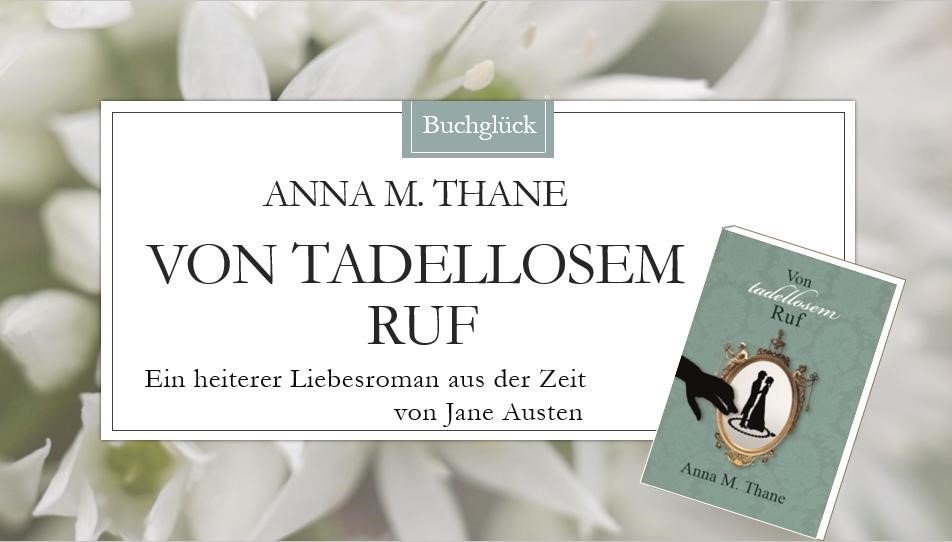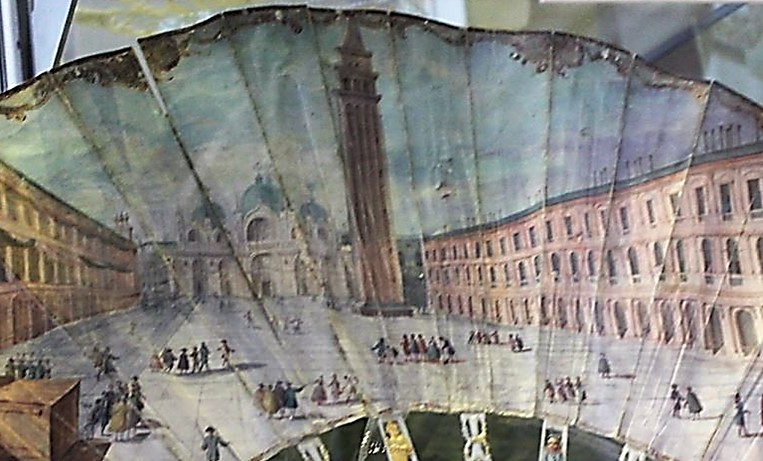
In the 18th century, Venice was among the top destinations of the Grand Tour. The city was experiencing a period of peace, and economy and arts flourished. This attracted rich British tourists. They indulged their sense of luxury, spent their days at leisure at Caffè Florian or Caffé Lavena, and enjoyed the opera, gambling, dancing, fireworks and spectacles. Buying art was also high on the list of things to do, and paintings with views of the City by sought-after artists such as Antonio Canal (Canaletto) made an excellent souvenir. Of course, pretty trifles were taken back to Britain as well. These could, e.g., be hand-held fans. Let’s have a closer look at one of these beautiful items.
This hand-held fan from the 1750s depicts the Piazza San Marco, with a travelling theatre and performing acrobats. The sticks and guards are covered with figures from the famous Commedia dell’arte.
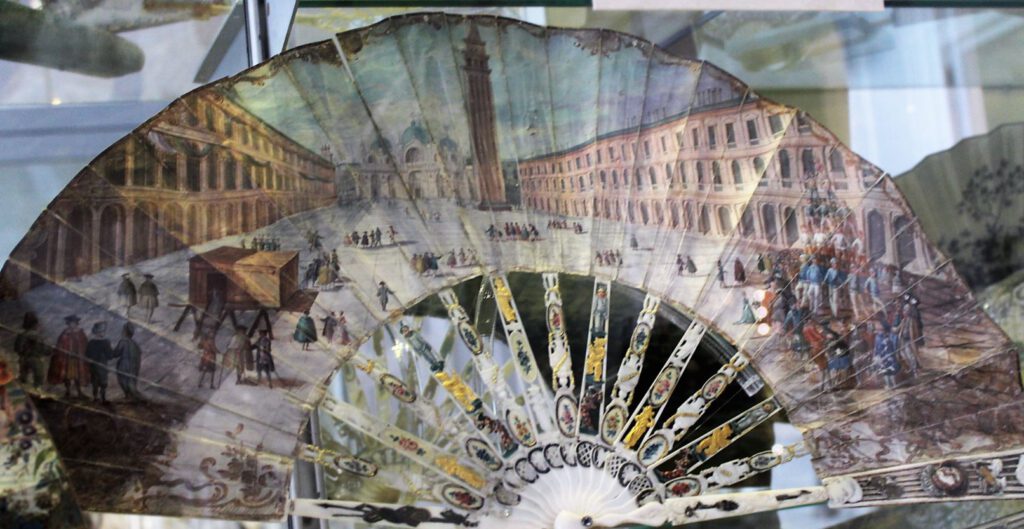
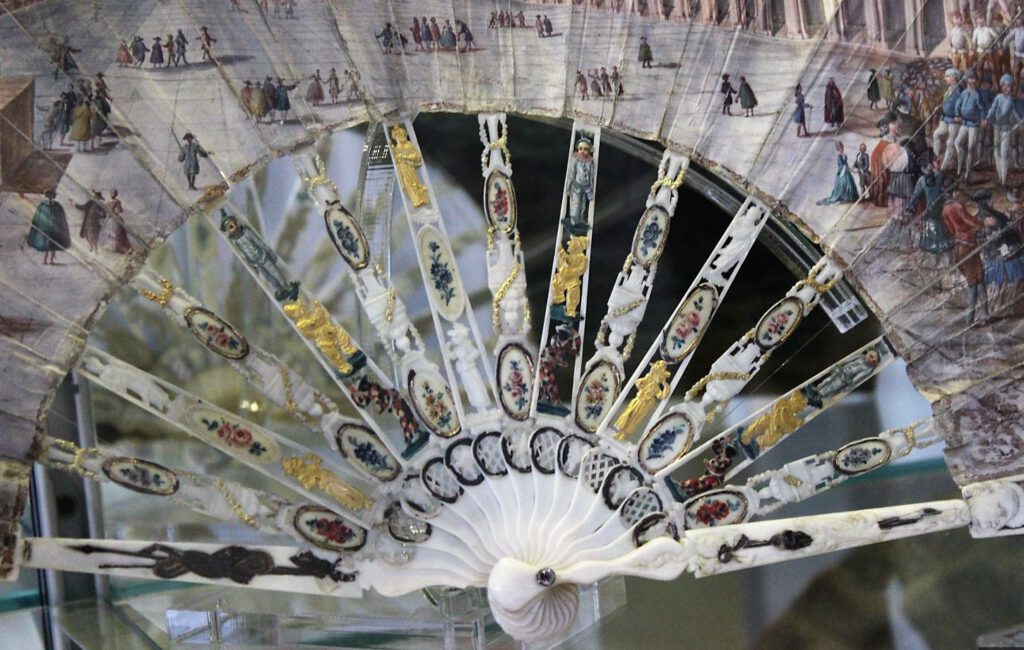
If you look at the details painted on the fan, you will notice several persons wearing masks.
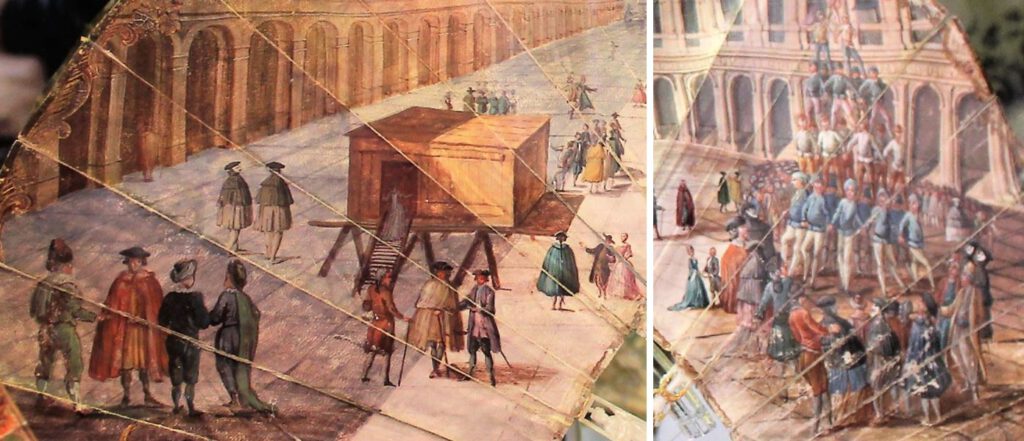
These masks are the so called bauta masks. The bauta was one of the most popular masks of the 18th century, usually white, and worn with a black cape and a tricorne hat. Though masks were connected to carnival, wearing the bauta mask was not limited to this season (lasting from Epiphany until the beginning of Lent). It was rather common for Venetians to wear the bauta whenever they wanted to maintain anonymity, and thus the bauta costume was typical for the Venetian lifestyle. In the 18th century, bauta masks could be worn by men and women alike. For the tourist, seeing people walking around in masks or even doing so oneself added considerably to the romantic charm of the city.
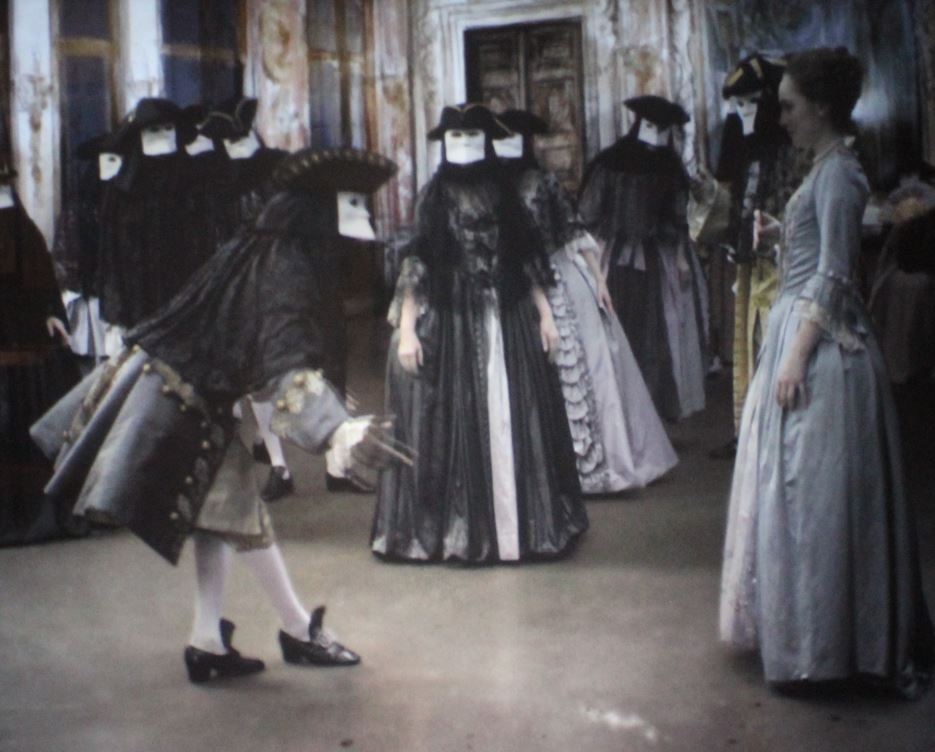
Another Venetian mask was typical for the 18th century, but only women were allowed to wear it: the moretta. It was a plain, oval mask, always black, and usually made of velvet. It had no openings for the nose or mouth. The mask was held close to the face without the use of straps, but by biting on a button at the level of the mouth. A woman wearing the moretta had to remain completely silent – and that was the desired effect. The black mask not only offered anonymity, but also guided the gaze of the passer-by to the elaborate dress. Being silent meant to deliberately refuse to give the sound of the voice, which was believed to be a faithful mirror of the soul, and by this showing that one did not care to react to the making of advances. The moretta was considered a mask of seduction, and 18th century men such as Casanova found it highly alluring.
It is possible that the moretta inspired the design of this British fan featuring a mask with openings for the eyes only.
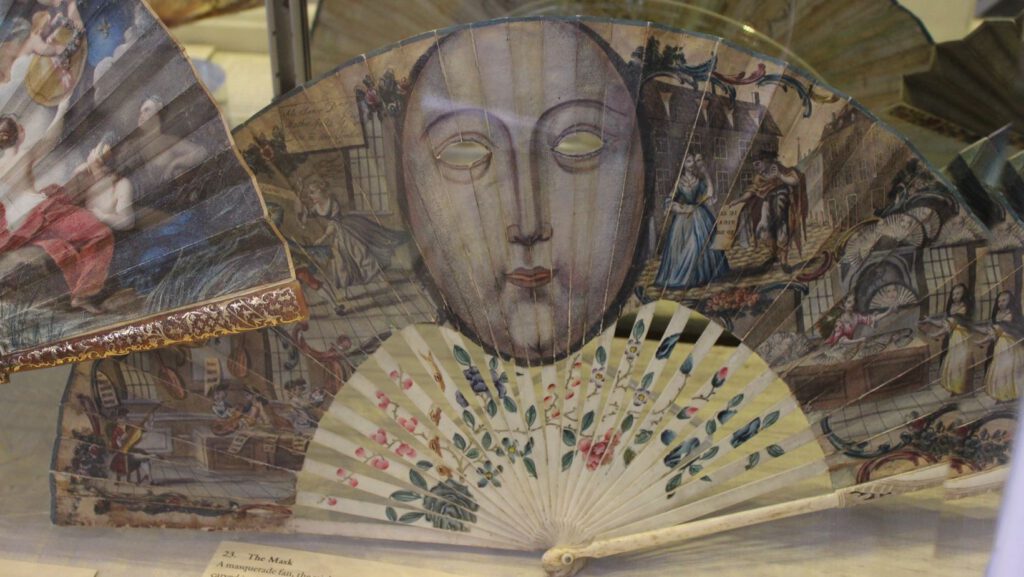
In 1797, Venice was conquered by Napoleon. This ended the period of prosperity. When Lord Byron visited from 1816 to 1819 to live licentiously for weeks, the city was in a sad decline. Wearing the Venice Carnival costume was banned, with the exception of private parties in Venetian palaces and special events at the La Fenice theatre. We can well picture Byron wearing the bauta mask at such occasions.
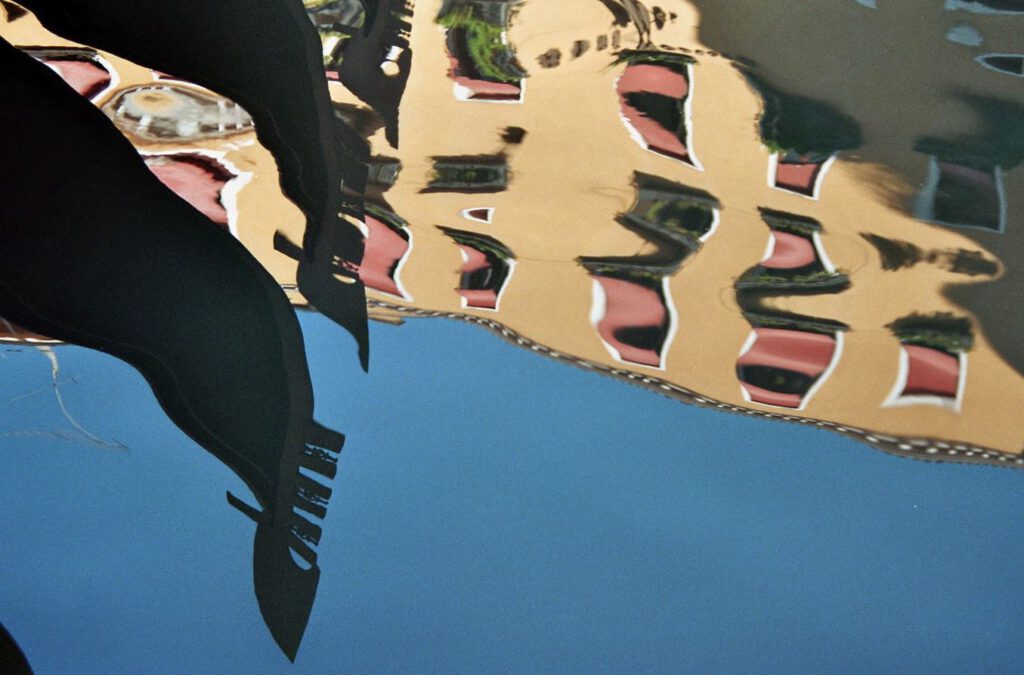
Related articles
Sources
- The Fan Museum, 12 Crooms Hill, London SE10 8ER, UK
- The V&M Museum, London, UK
- https://imagesofvenice.com/history-of-the-venetian-mask/
- https://richardrabel.com/the-last-day-5-of-5-travelling-to-europe-in-the-18th-century-venice
- https://www.hisour.com/travel-guide-of-venice-historic-tourism-italy-60304/
- https://www.vanderbilthistoricalreview.com/post/tourism-in-early-modern-venice
- https://independenttravelcats.com/casanovas-venice-discovering-18th-century-venice-context-travel/
- https://gregorydowling.com/in-venice-and-in-the-veneto-with-lord-byron/
- https://www.venetoinside.com/hidden-treasures/post/the-bauta-the-mystery-mask/
- https://www.thevenetianmasks.com/
- https://www.camacana.com
Article by Anna M. Thane, author of the novel
“Von tadellosem Ruf” (http://amzn.to/2TXvrez)
